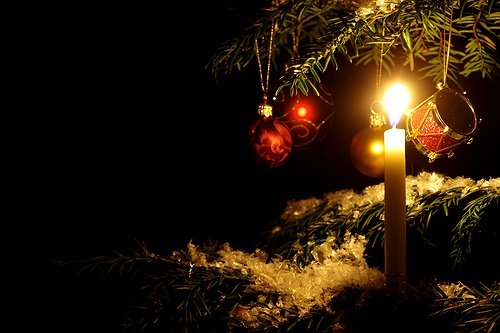Long Island, NY - December 4, 2014 - As you deck your halls this holiday season, make sure to keep fire safety in mind. According to the National Fire Protection Association (NFPA), home candle and decoration fires peak in December. Nearly half of all holiday decoration fires occur because the decorations are placed too close to a heat source, with two out of every five home decoration fires started by candles.
December is the leading month for home candle fires; Christmas Eve, Christmas Day and New Year’s Day are the top three days of the year for such fires.
“Holiday decorations can make the season look and feel truly festive, but some of them carry potential fire hazards that can quickly transform a joyous time of year into a tragic one,” said Lorraine Carli, NFPA’s vice president of Outreach and Advocacy. “Fortunately, the vast majority of holiday decoration fires can be prevented by following simple safety precautions.”
Christmas trees also present a potential fire hazard in the home; one of every three home Christmas tree fires is caused by electrical problems.
“Christmas trees are flammable objects. The longer they remain in the home, the more dried out they become, making them increasingly hazardous,” said Carli. “That’s why we strongly recommend Christmas trees be promptly removed from homes after the holidays.”
Although Christmas tree fires aren’t particularly common, when they do occur, they are likely to be serious.
In 2007-2011, one of every 40 reported home structure Christmas tree fires resulted in a death, compared to an average of one death per 142 total reported home structure fires in the same years.
To help keep your home and loved ones safe from fire when decorating this holiday season, NFPA offers the following tips and recommendations:
Candles
- Keep lit candles at least 12” away from decorations and anything else that can burn.
- Use candle holders that are sturdy and won’t tip over easily; put candle holders on a stable, uncluttered surface.
- Blow out all candles when you leave the room or go to bed. Avoid the use of candles in the bedroom and other areas where people may fall asleep.
Christmas Trees
- Choose a tree with fresh, green needles that don’t fall off when touched.
- Before placing the tree in a stand, cut 2” from the base of the trunk.
- Make sure the tree is at least three feet away from any heat source, including fireplaces, radiators, candles, heat vents or lights.
- Make sure the tree isn’t blocking any exits (i.e., a door or a window).
- Add water to the tree stand daily.
Decorative lighting
- Use lights that include the label of a recognized testing laboratory.
- Follow the manufacturer’s instructions for usage; some lights are designed for indoor or outdoor use, not both.
- Replace any string of lights with worn or broken cords or loose bulb connections. Connect no more than three strands of mini light sets and a maximum of 50 bulbs for screw-in light bulbs. Read the manufacturer’s instructions for the number of LED strands to connect.
- Use clips (not nails) to hang lights so the cords don’t get damaged.
- Turn off all light strings and decorations before leaving home or going to bed.
Visit their “Put a Freeze on Winter Fires” section for a host of tips and recommendations on holiday decorating, and for keeping fire-safe throughout the winter season.
Photo by John Nyberg via Free Images










